Systems integration with Effektif
Using JavaScript tasks to access web services 2014-09-24 #BPM
Effektif makes it easy to build a business process that contain human tasks, with its form builder and configurable work-flow. However, automating these business processes requires systems integration as well.
Managing human tasks is an important part of business process support, and there are tools that focus on this side of things, such as Asana and JIRA. Meanwhile, integration frameworks and platforms address interaction between systems without user tasks.
Business process management is the result of combining both human tasks and interactions with systems. In fact, in enterprise software development is all about enabling multiple people to interact with multiple systems as part of a single process.
Vacation requests - an integration example
The earlier article mentioned the example of a simple vacation request process: an employee requests vacation, and the request is approved or denied. This is one of Effektif’s example processes:
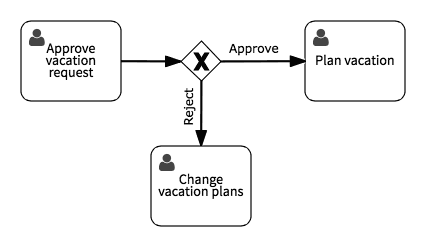
The process trigger is a form for the initial vacation request information:
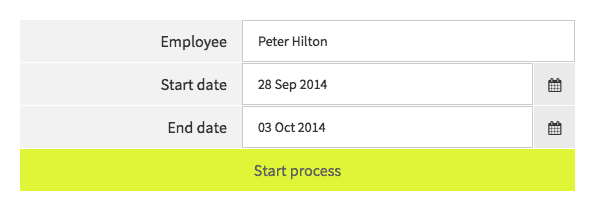
After starting the process, and completing the Approve vacation request task, Effektif’s ‘case stream’ shows what happened.
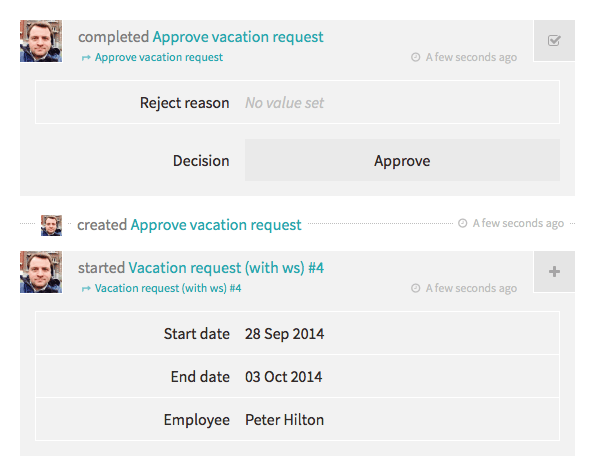
You can use this functionality to co-ordinate vacation requests, recording both requests and decisions. However, this only works if you want to use the built-in user interface to manage this process.
In practice, especially for more complex processes, there are existing systems for managing aspects of the process, such as providing visibility of current and historical requests. In this case, you would need to integrate Effektif with a back-end system.
Adding web services integration
Integrating with a back-end system typically means sending web services requests, as part of a Service-Oriented Architecture or using Microservices. To do this in Effektif, add a JavaScript task to the process and write code to send the web services request.
For this example, we’ll need a test server to represent an external system that we will send vacation requests to. This means inspecting HTTP client requests - we can use RequestBin to create an endpoint such as http://requestb.in/1cu152h1 for debugging.
The next step is to write some JavaScript code that sends data to this URL, which Effektif will run on the server. Effektif provides the Request HTTP client, which we can use as follows.
var url = 'http://requestb.in/1cu152h1';
var formData = { "start":startDate, "end":endDate, "employee":employee };
request.post(url, { "form": formData }, function(error, response, body) {
if (response.statusCode != 200) {
console.log('HTTP response status %d', response.statusCode);
console.log('Error: ‘%s’', body);
throw 'HTTP error';
}
});
After adding the JavaScript task to the process, you can add the code to the code editor, which indicates syntax errors and provides code completion.
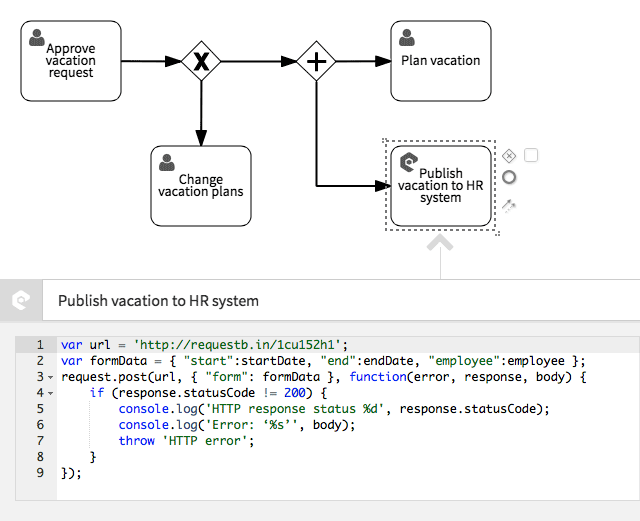
Note that the process splits using a parallel gateway (the diamond with a plus sign) so that the JavaScript task is executed in parallel with the Plan vacation task.
The code editor also includes a variable mapping, that you use to make process variables - startDate, endDate and employee - available to the JavaScript code.

The next step is to run the code, and inspect the results.
Testing web services requests
You can also use the code editor to enter test data and test the code. After entering test values for the mapped variables, click the Test it button to run the code and get the following output.
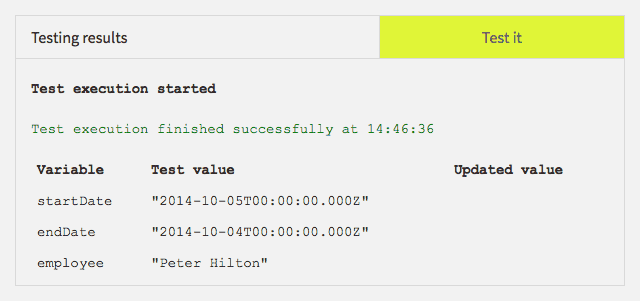
Meanwhile, RequestBin shows the HTTP request that the JavaScript code sent.
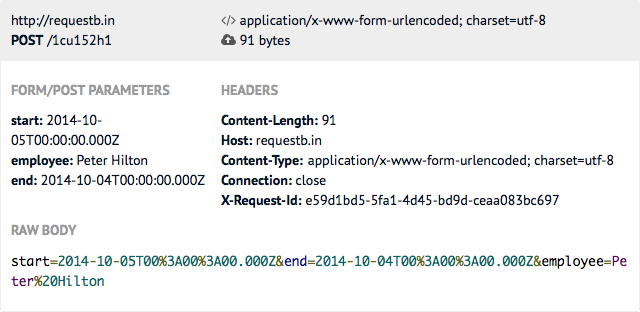
This shows the values of the form-encoded data sent in the request.
Error handling
The final ingredient is some basic error handling, which is provided by the JavaScript callback function that the Request library calls when the request is complete.
function(error, response, body) {
if (response.statusCode != 200) {
console.log('HTTP response status %d', response.statusCode);
console.log('Error: ‘%s’', body);
throw 'HTTP error';
}
}
When the HTTP response is not a success (status 200), the callback writes to the console and throws an exception. For example, suppose that an evil HR system starts rejecting requests with an All vacation is cancelled! error, then executing the process will result in the following output in the Effektif case stream.

The exception results in the red icon (top-right), and the console logging is also shown.

